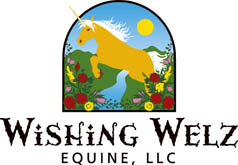What’s in your Pasture…Weeds or
Herbs?
by Loryhl Gutman ©2007, as published in Issue 8 of The
Horse's Hoof Magazine (2002)
Many people and their animals have lost the importance of the
real food of the earth—herbs. All herbs have exceptional qualities of health
and healing for animals and humans. They contain minerals and vitamins, and
many have anti-inflammatory, antihistamine, and nervine qualities. In the middle
ages, a working horse was kept healthy on a combination of, what we call today,
culinary herbs—parsley, sage, rosemary, thyme, mint and basil.
Being from the frozen North, it was not uncommon in Western Canada
to drive miles without seeing a soul (other than birds and four legged critters.)
Along these deserted roads would also appear signs stating that pesticide treatment
had been applied to kill chamomile and various other “weeds.” It always
alarmed me to see that.
I have spent a good many years sitting on the ground observing
my broodmares graze and pick. I too lived many years as a broodmare (mother),
swollen belly and all. During this time I had great peace and interest observing
what the mares did and did not eat.
In my particular pasture, there had been no haying, harvesting,
spraying or weeding. Just good old plain prairie pasture. The horses ate mint,
sage (not a lot, but it was ingested), clover, dandelion, willow bark (for teething),
plus other barks as available, plus chamomile, yarrow, nettles, plantain and
many more. I saw a grab here, a pick there, a mouthful of pungent stuff, mixed,
all eaten down. The most amazing thing I saw was the mares eating thistles and
thorns! So delicately eaten, with great enthusiasm. Not a drop of blood on those
tender lips.
Horses are pickers. In the wild or given a large area to roam,
they move from grass to shrub, to pond, eating lilies, cattails, trees, and
roots. All are delicacies not to be missed. When the equine connoisseur finds
a beehive within reach or one that has fallen, his first instinct is to eat
it—beeswax and all.
The minerals and vitamins from fresh, organic, sun-drenched herbs
cannot be measured. The natural pollen and honey from the flowers-a true feast.
The oils alone in the different herbs have a great effect on the mood and outlook
on life.
I’ve tasted many of these herbs fresh. Some taste so bitter
I’m surprised a horse would even like them. Others are so tasty, sweet,
aromatic or satisfying that it is no mystery why anyone would eat them!
Horses are herbivores and they know instinctively what is good
for them. This brings to mind the numerous horse operations I have visited over
the years—white fences, perfectly groomed lawns with not a weed in sight,
even in the paddocks! Unbelievable! No trees, no bark to chew on, no thistles
to carefully munch, no poison ivy to chow down, no sage, clover, plantain, buffalo
beans, yarrow, mint, wild onion or willow bark to chew on, no benefits of herbs.
Not all herbs are good. Nightshades are a problem in Florida.
I have seen horses crippled and almost die from eating nightshades. It is nearly
an epidemic. Generally, equines won’t eat the poisonous stuff if the other
good ones are in abundance, but be careful.
Yarrow—used for fevers, colds, bleeding internally
or externally, kidneys, hair loss, rheumatism. Has a long list of other beneficial
properties over many centuries of use.
Mint—used for pain in the digestive tract, efficient digestion of foods,
colic, flatulence, colds, flu, mucus release, causing sweat, etc.
Chamomile—a tonic, used for soothing the stomach,
colic, hysteria, and nervousness. Completely harmless.
Plantain—used for sore throat, mucus on the throat,
wounds, venomous bites, diuretic, used in ancient times to cure mad dogs, bowel
and kidney complaints.
Sage—an old French saying goes, “Sage helps the
nerves and by its powerful might, palsy is cured and fevere is put to flight’
The native peoples of North America have used sage for thousands of years in
sacred ceremonies and in healing the sick and in everyday cooking. Said to be
the anti-plague herb.
These are just a few of the many herbs out there in the pasture.
Letting a horse graze naturally is the best way to get herbs into him. We just
need to “un-pave” the way!!
Loryhl Gutman has been a practicing herbalist for over 20 years.
She owns and operates “Herbs of the World,” which develops high quality
herbal preparations for horses. Contact her at Loryhl@aol.com, website www.equi-animalherbs.com.
As published in Issue 8 of The Horse's
Hoof Magazine (2002)
©2007 by The Horse's Hoof. All rights reserved. No part
of these publications may be reproduced by any means whatsoever without the
written permission of the publisher and/or authors. The information contained
within these articles is intended for educational purposes only, and not for
diagnosing or medicinally prescribing in any way. Readers are cautioned to
seek expert advice from a qualified health professional before pursuing any
form of treatment on their animals. Opinions expressed herein are those of
the authors and do not necessarily reflect those of the publisher.
